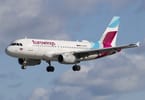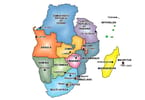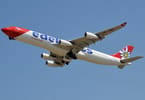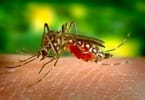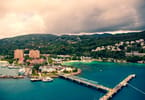Australian government released its National Aviation Policy Statement, titled ‘Flight Path to the Future’, which aims to set the agenda for airport and airline development in Australia until 2020.
The paper includes a section covering aviation security that will be of interest to the travel retail industry in particular. Although the government stopped short of major changes to LAGs (Liquids, Aerosols and Gels) regulations, it did say it would amend certain rules to allow passengers to leave large-sized LAGs purchases on board during transit stops on international flights, “and as a result avoid the need to rescreen these items”.
Asked about the implications of this move, Jann Fisch, CEO Australia & New Zealand for the country’s leading airport retailer The Nuance Group, told The Moodie Report: “We welcome this step. It is a formalisation of actions that have been taken by several airports and airlines already, working with the government, to prevent the confiscation of goods while transiting domestically. The impact on our business is not likely to be material but it will help to remove some upsetting customer experiences which are not good for customers or the reputation of Australia.”
He added: “We are hopeful that this is the beginning, in line with recent announcements, of a relaxation in LAGs restrictions which have been damaging to us in Australia as they have been to the industry globally.”
From July next year passengers will also be allowed to carry certain previously banned implements, such as nail files and clippers, umbrellas, crochet and knitting needles.
Metal cutlery will also be allowed on board aircraft and in airport restaurants following government recognition that security arrangements should target ‘real risks’.
Among the other initiatives, the white paper outlines the government’s commitment to building a second major airport to serve the Sydney region and underlines how it plans to encourage international airlines to increase services to secondary international gateways such as Cairns, Darwin and Broome.
The government will also retain the restriction of 49% maximum foreign investment in Australian international airlines but remove the secondary restrictions (applying only to Qantas) preventing overseas individuals and foreign airlines holding more than 25% and 35% ownership respectively.
Minister for Transport Anthony Albanese said: “It now seems we are beginning to see the first “green shoots” of recovery in the aviation industry. For the month of September 2009 compared with September 2008, passengers travelling into and out of Australia grew by +11.3. This is the highest month-on-month increase for some time.
“There are also signs of growth in the domestic market, with passengers carried on Australian domestic routes in September 2009 increasing by +2.3% compared with September 2008.
“The worst of the world recession may be over, but the industry will remain subject to economic cycles and volatile oil prices. Terrorism remains an ever present threat and climate change is emerging as the big issue of the 21st century. Unless we take active measures now, skills shortages will re-emerge as a serious problem as the industry returns to growth.
“This White Paper charts the way forward as we tackle the many issues that will confront the aviation industry in coming years.”
WHAT TO TAKE AWAY FROM THIS ARTICLE:
- “We are hopeful that this is the beginning, in line with recent announcements, of a relaxation in LAGs restrictions which have been damaging to us in Australia as they have been to the industry globally.
- Although the government stopped short of major changes to LAGs (Liquids, Aerosols and Gels) regulations, it did say it would amend certain rules to allow passengers to leave large-sized LAGs purchases on board during transit stops on international flights, “and as a result avoid the need to rescreen these items”.
- Among the other initiatives, the white paper outlines the government's commitment to building a second major airport to serve the Sydney region and underlines how it plans to encourage international airlines to increase services to secondary international gateways such as Cairns, Darwin and Broome.







